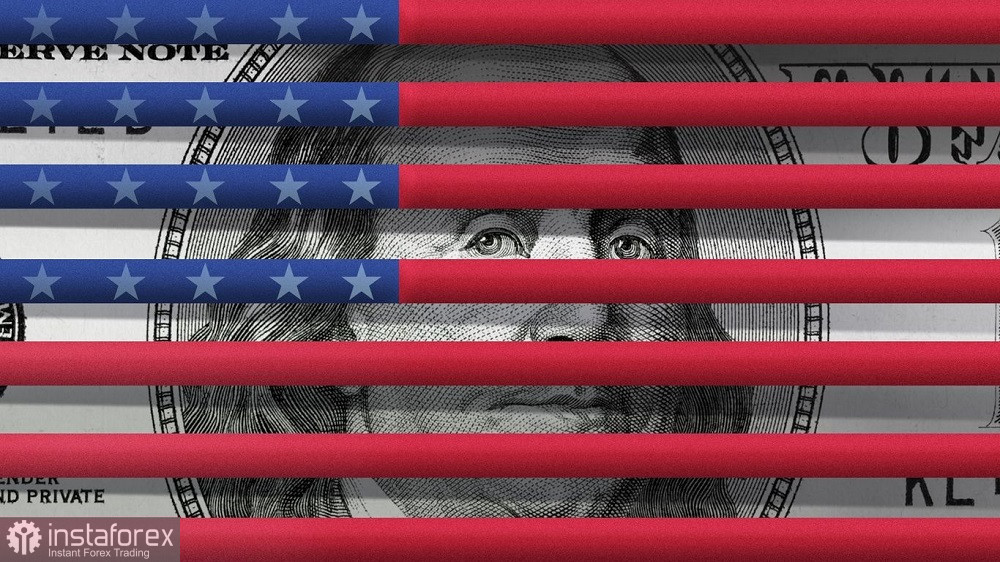April's Nonfarm Payrolls turned out to be on the side of the greenback. The US labor market report published on Friday provided temporary support for the dollar, strengthening the bearish positions of EUR/USD. The pair turned south and tested the lower limit of the 1.0960 – 1.1070 range, within which it has been trading for the second straight week. However, by the end of Friday, bears were unable to build on their success. This is not surprising, as neither the Federal Reserve nor the European Central Bank managed to untie this knot. The pair, as if enchanted, keeps circling, bouncing off the limits of the aforementioned price range.
"Green Nonfarm Payrolls"
In the foreign exchange market, it is rare for traders to receive clear fundamental signals: usually, one of the components of a report "deviates" from the general course, thus sowing doubts about a particular trading decision. Yet sometimes market participants receive very categorical messages that allow them to draw equally categorical conclusions. April's Nonfarm Payrolls belong to this category.

All components of Friday's release came out in the "green zone," reflecting positive trends in the US labor market. In particular, the number of employed in the non-agricultural sector increased by 253,000, significantly exceeding preliminary forecasts (170-180,000). In the private sector, the indicator also demonstrated strong dynamics – an increase of 230,000 with a growth forecast of 160,000. The unemployment rate also did not disappoint: despite predictions of an increase to 3.7%, it came out at 3.4%. The share of the economically active population also increased to 62.6%. The inflationary component of Nonfarm Payrolls (the average hourly wage indicator) similarly showed an uptrend. Thus, in monthly terms, the indicator grew by 0.5% (although the forecast was at 0.3%), and in annual terms – by 4.4% (with a growth forecast of 4.2%).
Modest trader reaction
Friday's release indeed pleased dollar bulls, but by the end of the trading day, the "joyful emotions" completely disappeared. The EUR/USD pair recovered its lost positions and ended the week at 1.1019, i.e., within the price range of 1.0960 – 1.1070. Such a restrained reaction was due to several fundamental factors.
First, Friday's Nonfarm Payrolls were preceded by a strong report from the ADP agency, which also came out in the "green." According to official data, the number of employed in the non-agricultural sector increased by 253,000, while the agency's growth estimate was 296,000. This fact also speaks of the high correlation between these reports: ADP serves as a kind of "storm petrel" before the release of official data.
In other words, the "ADP factor" neutralized the surprise effect, preparing the market for strong official figures.
However, this circumstance is secondary. The key reason for the market's reaction lies elsewhere: the Friday report did not change anything in the context of strengthening/weakening hawkish expectations regarding the Fed's further actions. Right now, the probability of maintaining the status quo at the June meeting is 91% (according to data from the CME FedWatch Tool). That is, the market is effectively confident that the central bank will take a wait-and-see stance next month, despite strong Nonfarm Payrolls and the growth of the pro-inflationary component (average wage level).
Here, it is necessary to refer to the Fed's May meeting, the results of which we learned last Wednesday. The central bank unambiguously made it clear that the next round of rate hikes will only take place in case of extreme necessity – if inflation suddenly starts to accelerate (primarily core inflation). At the same time, the Fed excluded the key phrase – about the need for further tightening of monetary policy – from the accompanying statement.
All this indicates that April's Nonfarm Payrolls should be considered only in conjunction with the main inflation indicators. For example, if the core consumer price index in April again shows an uptrend, the probability of another interest rate hike in the coming months will increase. Strong US labor market indicators, in this case, will contribute to the adoption of a hawkish decision. But if the key inflation indicators (primarily core CPI) demonstrate a downtrend, the Fed will maintain a wait-and-see stance. Nonfarm Payrolls will not play a decisive role in this case.
Conclusions
The data on the growth of the US labor market published on Friday should be viewed through the prism of key inflation indicators. Thus, on Wednesday (May 10), the April consumer price index will be published in the United States, which will determine the fate of the greenback. If the core index shows a downtrend, the dollar will again come under pressure, despite strong Nonfarm Payrolls. In this case, the Fed's wait-and-see stance will likely be maintained – at least in the context of the June meeting.
Considering this disposition, we can assume that in the perspective of the next few days (i.e., until May 10), the EUR/USD pair will continue to trade within the range of 1.0960 – 1.1070, waiting for the key release of the week.
 English
English 
 Русский
Русский Bahasa Indonesia
Bahasa Indonesia Bahasa Malay
Bahasa Malay ไทย
ไทย Español
Español Deutsch
Deutsch Български
Български Français
Français Tiếng Việt
Tiếng Việt 中文
中文 বাংলা
বাংলা हिन्दी
हिन्दी Čeština
Čeština Українська
Українська Română
Română

